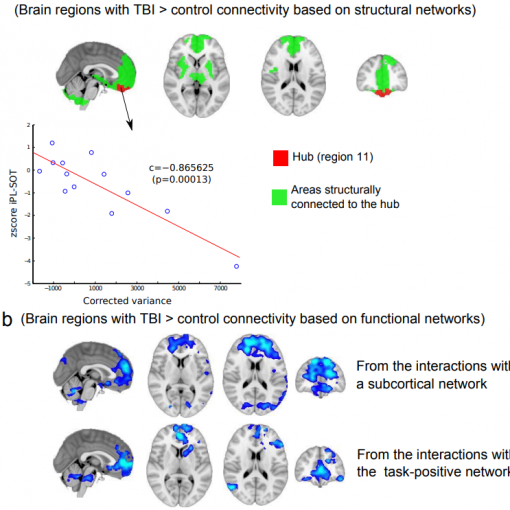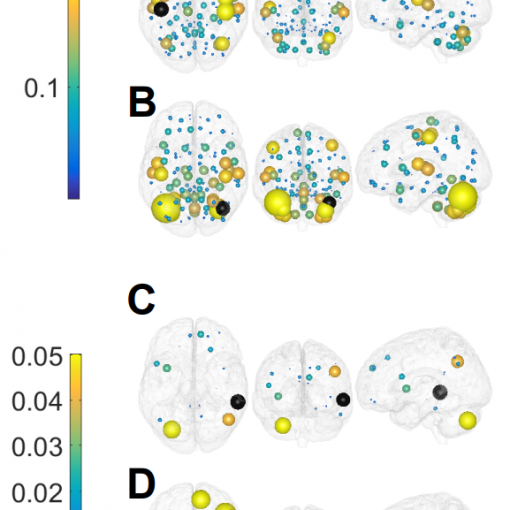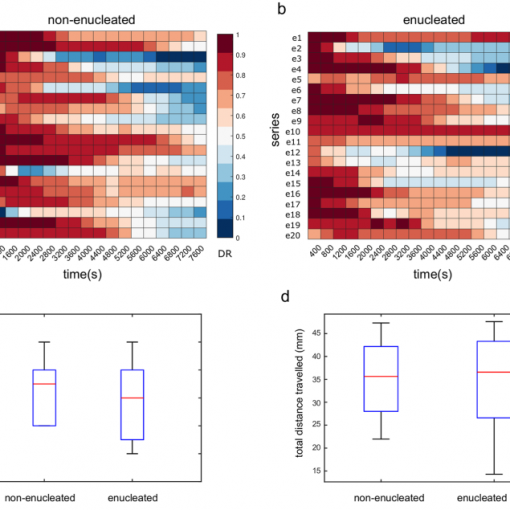Borja Camino-Pontes, Ibai Diez, Antonio Jimenez-Marin, Javier Rasero, Asier Erramuzpe, Paolo Bonifazi, Sebastiano Stramaglia, Stephan Swinnen, Jesus M. Cortes. Interaction Information Along Lifespan Reveals a Redundant Role of the Default Mode Network. OHBM 2019 – Organization for Human Brain Mapping [pdf]
Introduction:
In this work recenty published (Camino-Pontes et al 2018), we show that the use of interaction information (II) can detect redundant or synergetic interactions in dynamical networks. De ned for a set of three variables, II measures the change in the mutual information between any two variables after adding the third. If the change is positive, a synergetic interaction occurs in the triplet, whereas if the change is negative, redundant interactions emerge (Erramuzpe et al, 2015). Therefore, whilst the mutual information (MI) shared between two variables is always positive or zero, II can be either positive or negative, respectively, unveiling redundancy (R) or synergy (S). We asses synergetic and redundant interactions along lifespan, calculating II from functional MRI in a population of participants with an age range from 10 to 80 years.
Methods:
Image acquisition was performed in a MRI Siemens 3T MAGNETOM Trio MRI scanner with a 12-channel matrix head coil. We applied resting functional MRI preprocessing similar to previous work (Rasero et al. 2017; Stramaglia et al, 2017) using FSL and AFNI. The brain was divide in 2514 using the brain hierarchical atlas (BHA), developed in (Diez et al, 2015). Here, we focus on the M=20 module partition as was shown to be optimal based on cross-modularity. For calculation of II, we used triplets (X,Y,Z) of module time series and applied II(X,Y,Z)≅MI(X,Y)- MI(X,Y|Z), estimating MI(X,Y) and MI(X,Y|Z) using the Gaussian copula approach. For statistical analysis, rst, we averaged for each participant and over all brain modules R, S and R/S. Second, we performed a Kruskal-Wallis test between the values corresponding to the different age intervals. Third, we performed a Wilcoxon rank sum test as a post-hoc analysis. Fourth and last, we applied a Bonferroni correction by building a signi cance treshold.
Results:
Lifespan was assessed de ning four different intervals of age: I1 (10–20 years), I2 (20–40 years), I3 (40–60 years) and I4 (60–80 years). Along lifespan, the average R over all brain modules showed differences between groups I3 vs. I4. Highest values were found in areas that are associated with a superposition of three important resting state networks, namely, default mode, sensory-motor and auditory networks. The average S over all brain modules showed differences between groups I1 vs. I4 and I2 vs. I4. Highest values were found in these areas that are associated with different cognitive domains, such as spatial and temporal memory, emotion processing and motor skills. We have found that the amount of R is somehow compensated by S, and this occurred for all brain modules and along lifespan. Post-hoc pairwise comparisons did not show either any signi cant comparison, indicating a robust balance between R and S along lifespan. Despite the effective balance between R and S (captured by the ratio R/S close to 1), however, some brain areas went beyond the balanced regime. Infra-unbalanced brain maps overlapped with the frontoparietal network. Balanced brain maps overlapped with the cerebellum and visual networks. Supra-unbalanced brain maps matched with the DMN.





